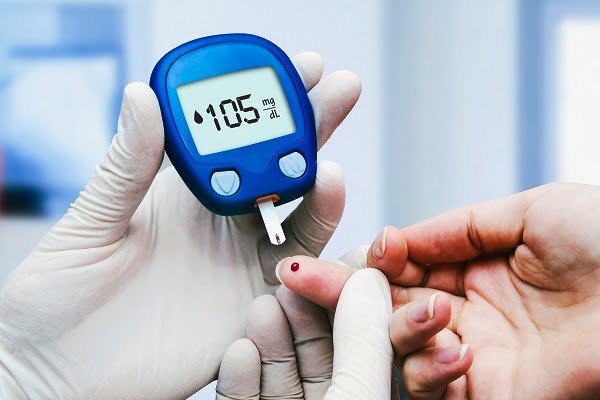Blood Sugar Chart You’ll Need All the Time in Diabetes
- Updated on: Jun 10, 2024
- 6 min Read
- Published on Apr 22, 2021


What is a blood sugar chart?
A blood sugar chart or blood glucose chart or blood sugar level chart identifies ideal blood sugar levels in your body throughout the day, including before meals and after meals. If you need to keep track of your blood sugar levels, particularly when you are diabetic, during the day or over a period of weeks or months, you can use a blood sugar chart as a reference.
The blood glucose chart is also known by many other names such as diabetes chart, low blood sugar levels chart, high blood sugar level chart, blood sugar levels chart by age, diabetic blood sugar chart, normal blood sugar levels chart, etc.
Why is it important to monitor my blood sugar levels (blood glucose levels)?
Tracking blood sugar is important for anyone who is suffering with diabetes or who is at risk of diabetes mellitus. Your blood sugar levels also called blood glucose levels change throughout the day. It is therefore important to monitor them and keep in mind exactly what your targets should be to make sure that you adhere to the guidelines and maintain ideal blood sugar levels.
You can use a blood sugar level chart as a healthy blood sugar level reference when you wake up, when you got o bed, when you are going to have a meal, and after you have taken a meal.
You or your doctor can use blood sugar level charts to specify target goals and monitor how well your diabetes treatment is going. Blood sugar charts also help those with diabetes review the blood sugar test results.
Other benefits of using blood sugar charts and blood sugar level charts are:
- A diabetic chart helps keeping blood sugar levels as close to normal as possible to the set target goals
- Comparing your at home test results of blood sugar with blood sugar chart as a reference for monitoring the levels
- Understand normal, ideal, and abnormal blood sugar levels for those with and without diabetes
- A1C blood sugar recommendations are also mostly included in blood sugar charts. An A1C test measures the average sugar levels over a 3-month period. This gives a better insight into overall health of a person with respect to the blood sugar levels.
- Diabetic charts or blood sugar charts are important tools for your diabetes management
Blood sugar chart or Blood sugar level chart
| When to check | Blood sugar levels for people without diabetes | Blood sugar levels for people with diabetes |
|---|---|---|
| Fasting (before breakfast) | less than 100 mg/dL | 80 – 130 mg/dL |
| Before meals | less than 110 mg/dL | 70-130 mg/dL |
| 2 hrs after meal 1-2 hrs after meal |
less than 140 mg/dL | less than 180 mg/dL |
| Bedtime | less than 120 mg/dL | 90 – 150 mg/dL |
| A1C levels | less than 5.7 percent | less than 7 percent |
Interpreting your blood sugar test results
Ideals blood sugar levels may vary from person to person slightly. A good blood sugar level for one person may be too high or too low for someone else. For people with diabetes, though, some ranges of blood sugar levels are specified as are preferable over others.
| Blood sugar levels | Excellent | Good | Acceptable |
|---|---|---|---|
| Before meal | 72 – 109 mg/dL | 110 – 144 mg/dL | 145 – 180 mg/dL |
| 2 hours after meal | 90 – 126 mg/dL | 127 – 180 mg/dL | 181 – 234 mg/dL |
Blood sugar level recommendations for gestational diabetes
Certain temporary forms of diabetes such as gestational diabetes have different recommendation. The blood glucose chart for them is:
| When to check | Blood sugar levels in mg/dL |
|---|---|
| Fasting or before breakfast | 60 – 90 mg/dL |
| Before meals | 60 – 90 mg/dL |
| 1-2 hours after meal | 100 – 120 mg/dL |
Dangerous levels of blood sugar (blood glucose)
There are certain ranges beyond which one should be concerned about, as these are considered as dangerous blood sugar levels or dangerous blood glucose levels. The risk level increases with these sugar levels in the blood. This blood glucose chart can be used as a reference for risk assessment.
| Fasting blood sugar levels | How dangerous it is (Risk) Risk level | What to do? |
|---|---|---|
| 50 mg/dL or less | Dangerously low | Seek medical attention |
| 70 – 90 mg/dL | Possibly too low | Consume sugar if you are experiencing symptoms of low blood sugar or meet a doctor |
| 90-120 mg/dL | Normal range | No action needed |
| 120-160 mg/dL | Medium | Meet a doctor |
| 160 – 240 mg/dL | Too high | Need to lower your blood sugar levels |
| 240-300 mg/dL | Too high | It is a sign of uncontrolled diabetes. Meet a doctor at the earliest. |
| 300 mg/dL or above | Very high. Critically Dangerous. | Emergency. Seek immediate medical attention. |
AIC Numbers and blood glucose levels
Another way to understand your blood sugar is through the A1C test, An A1C lets you know where your glucose levels have been on average, over the last three months or other time frames.
A1C is a protein in red blood cells, and it binds with glucose. Since the red blood cells have a lifespan of about three to four months, the amount of blood sugar A1C collects can tell us about the average of your blood glucose levels.
The A1C percentage can be translated into other forms of readings based on the following blood sugar chart (diabetic chart).
How to translate A1C numbers into blood glucose levels
| A1C (%) | Blood Sugar Levels (mg/dl) |
|---|---|
| 6 | 126 |
| 6.5 | 140 |
| 7 | 154 |
| 7.5 | 169 |
| 8 | 183 |
| 8.5 | 197 |
| 9 | 212 |
| 9.5 | 226 |
| 10 | 240 |
Testing your blood sugar and Monitoring blood sugar levels
Monitoring blood sugar levels is important for the management of diabetes. It includes both self-monitoring at home and doctor-ordered tests, such as A1C tests.
You should track blood sugar level changes daily if you are diabetic and help your doctors understand what treatment plans are working or not working for you. This will help him or her adjust medications or set goals.
How frequently you should test your blood sugar varies according to your treatment plan and the type of diabetes you have. Here is how frequently you should test your blood sugar.
Type 1 diabetes in adults
At least twice daily and up to 10 times.
Tests should be done before breakfast, at fasting, before meals, 1-2 hours after meals, before and after physical activities or exercises, and when going to bed.
Type 1 diabetes in children
At least four times daily.
Tests should be done before having meals and when going to bed. Tests may also be required 1-2 hrs after meals, before and after exercise, and overnight.
Type 2 along with insulin or other medication going on
The frequency of tests varies depending on your insulin dosage and any other medicines you are taking.
If you are on intensive insulin medication, you should do tests at fasting, before meals, before bedtime, and sometimes in the night if needed. Those on usual insulin and additional medications dosage should at least perform the tests at fasting (before breakfast) and bedtime.
Those not on insulin but oral medications or diet control do not require frequent blood sugar testing at home.
Type 2 diabetes and low risk of low blood sugar
Daily tests are not usually required. If blood sugar goals or A1C levels are not met regularly, the frequency of testing can be increased until the levels are back within normal ranges.
Gestational diabetes
If you are on insulin, tests should be done at fasting, before meals, and 1 hour after meals. If you aren’t on insulin, you should perform tests at fasting and 1 hour after meals.
FAQs
Why is a blood sugar chart essential for individuals with diabetes?
A blood sugar chart helps track daily variations, identify patterns, and enables better diabetes management by providing valuable insights into the effects of diet, exercise, and medications.
What are the optimal blood sugar levels to maintain for people with diabetes?
Target levels vary, but generally, fasting blood sugar levels between 80-130 mg/dL and post-meal levels below 180 mg/dL are recommended for effective diabetes management.
How frequently should one update their blood sugar chart?
Regular updates, ideally multiple times a day, allow for a comprehensive understanding of daily fluctuations, aiding in making timely adjustments to the diabetes management plan.
Can a blood sugar chart help in preventing complications associated with diabetes?
Yes, by providing a clear picture of blood sugar control, the chart aids in the prevention of complications, guiding individuals and healthcare providers in making informed decisions.
Are there digital tools or apps available to simplify blood sugar charting?
Yes, numerous apps and digital tools make blood sugar tracking convenient. These tools often provide visual representations and trend analyses, enhancing the efficiency of diabetes management.













1 Comment
At the beginning, I was still puzzled. Since I read your article, I have been very impressed. It has provided a lot of innovative ideas for my thesis related to gate.io. Thank u. But I still have some doubts, can you help me? Thanks.